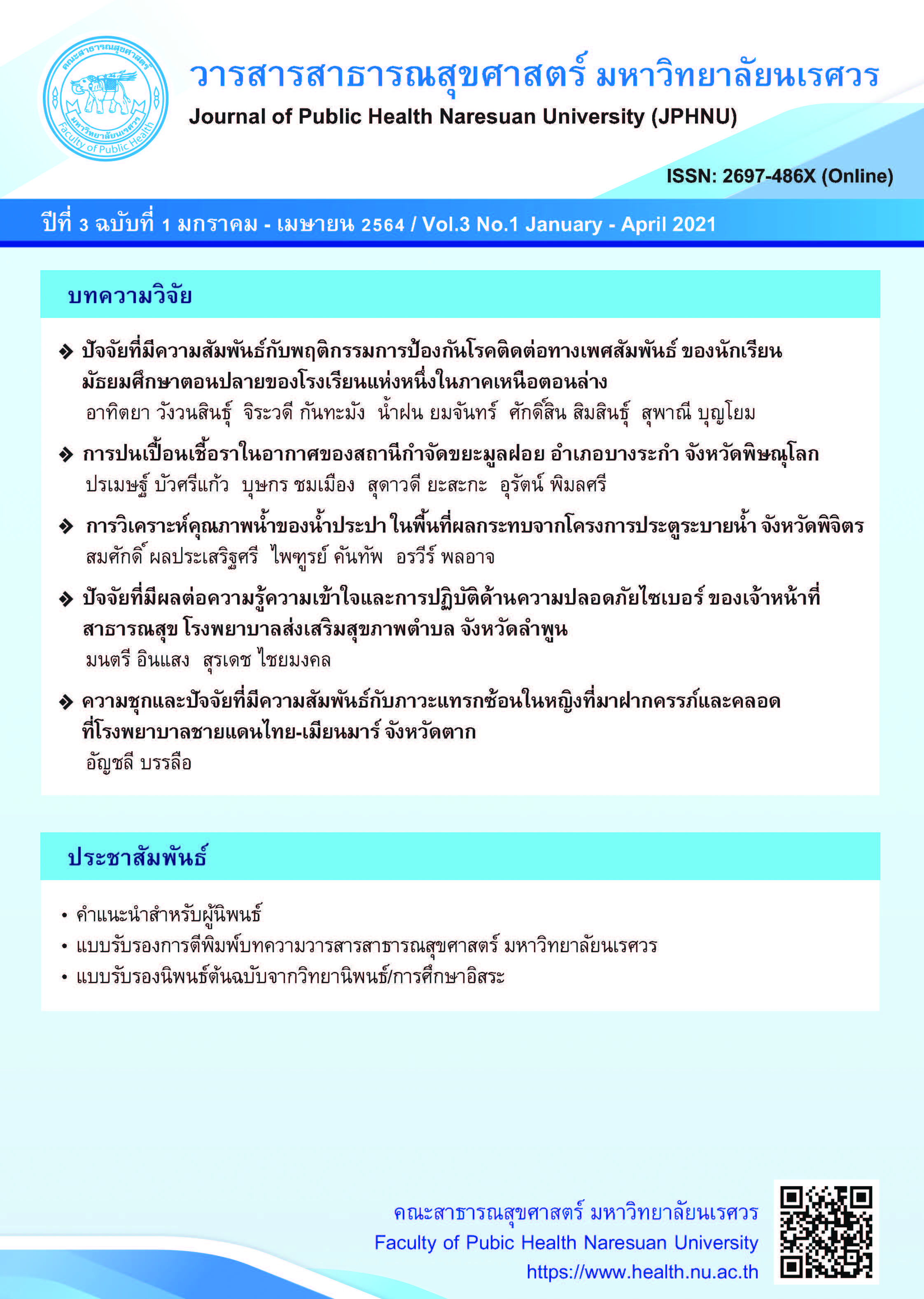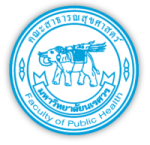Factors related to sexually transmitted disease preventive behaviors among high school students of a school in lower northern region
Keywords:
Students, Behaviors, Sexually transmitted diseaseAbstract
This correlational research aimed to study sexually transmitted disease preventive behaviors and factors related to sexually transmitted disease preventive behaviors among high school students of a school in lower northern region. The sample size was 288 high school students which were collected using a multistage random sampling method. Questionnaires were used for data collection. Data were analyzed using descriptive statistics including frequencies, percentages, means, and standard deviations. The correlation analysis was also conducted using Pearson product moment correlation coefficient, and Eta correlation coefficient.
The results showed that 78.5 percent of the samples had a moderate level of sexually transmitted disease preventive behaviors. Factors that were significantly positive relationships among sexually transmitted disease preventive behaviors including perceived self-efficacy (r = 0.520, p-value < 0.001), condom accessibility and sexually transmitted disease preventive information (r = 0.417, p value < 0.001), peer support (0.325, p-value < 0.001), teacher support (0.319, p-value < 0.001), family support (r = 0.303, p value < 0.001), and attitude toward sexually transmitted disease preventive behaviors (0.293, p-value < 0.001). These findings provide the information to healthcare personnel and school health teacher to develop a comprehensive intervention program for sexually transmitted disease preventive behavior for high school students. This program should include the activity that relevant to individuals, friends, teachers, and the environment that enabling information and condom access which leads to the development of correct sexually transmitted disease preventive behaviors.
References
Ajzen, I. (1993). Attitude theory and attitude-behavior relation. In D. Krebs & P. Schmidt (Eds.), New directions in attitude measurement (pp. 41-57). Berlin: Walter de Gruyter.
Aguirrebengoa, O. A., Garcia, M. V., Sanchez, M. R., D´Elia, G., Méndez, B. C., Arrancudiaga, M. A. et al. (2020). Risk factors associated with sexually transmitted infections and HIV among adolescents in a reference clinic in Madrid. PLoS One, 15(3), e0228998. doi:10.1371/journal.pone.0228998
Bandura, A. (1997). Self-efficacy: The exercise of control. New York: W.H. Freeman and company.
Baokhumkong, J. & Kata, S. (2018). Factors associated with risk behavior of HIV infection and sexually transmitted diseases of students: The case study in Ubon Ratchathani Rajabhat University. Journal of the Office of DPC 7 Kon Kaen, 26(1), 66-76. (in Thai)
Best, J. W. (1977). Research in education. (3rd ed.). Engle Clift, NJ: Prentice-Hall.
Bureau of Epidemiology. (2018). Guidelines for communicable disease reporting dangers and communicable diseases according to the Communicable Disease Act 2015. Nontaburi: Bureau of Epidemiology. (in Thai)
Charoensir, S., Toonsiri, C., & Leelukkanaveera, Y. (2019). Factors affecting sexually transmitted infection preventive behaviors among male students in Non-formal Education. Journal of Phrapokklao Nursing College, 30(2), 14-25. (in Thai)
Monyarit, S. (2020). The situation of the 5 sexually transmitted diseases in the youth Thailand. Retrieved July 20, 2020, from https://ddc.moph.go.th/uploads/publish/1006020200507053840.pdf (in Thai)
Pawaree, V. (2014). Preventive behavior on sexually transmitted diseases by condom of people in Watsisuk community, Chomthong District, Bangkok Metropolitan Administration. APHEIT Journal, 20(2), 148-157. (in Thai)
Plan International Thailand & Right to Play foundation. (2017). Life skills guide. Retrieved July 20, 2020 from http://www.esbuy.net/_files_school/00000883/document/00000883_0_20200811-095635.pdf (in Thai)
Schaffer, M. A. (2004). Social support. In S. Peterson & T. S. Bredow (Ed.), Middle range theories, application to nursing research. (1st ed.). Philadelphia: Wolters Kluwer Health/Lippincott Williams & Wilkins.
Sutthiphong, R. (2015). Association of self-efficacy in relation to sexually transmitted diseases preventive behaviors in high school students, Muang District, Ratchaburi Province. Retrieved July 20, 2020, from http://rms.mcru.ac.th/uploads/639575.pdf. (in Thai)
Thampanichawat, W. & Olanratmanee, B. (2018). Sex education for adolescents in school: A case study in Bangkok. Thai Journal of Nursing Council, 33(3), 82-98. (in Thai)
UNICEF Thailand. (2016). Research report to review CSE teaching in educational institutions Thai. Bangkok: UNICEF Thailand. (in Thai)
Wayne, W. D. (1995). Biostatistics: A foundation of analysis in the health sciences (6th ed.). Newyork: John Wiley & Son, Inc.
Downloads
Published
How to Cite
Issue
Section
License
Copyright (c) 2021 Journal of Public Health Naresuan University

This work is licensed under a Creative Commons Attribution-NonCommercial-NoDerivatives 4.0 International License.
The published article is copyrighted by the Journal of Public Health and Health Sciences Research.
The statements that appear in each article in this academic and research journal are the personal opinions of each author and are not related to Naresuan University and other faculty members in the university. Responsibilities regarding each article are the responsibility of each author.






